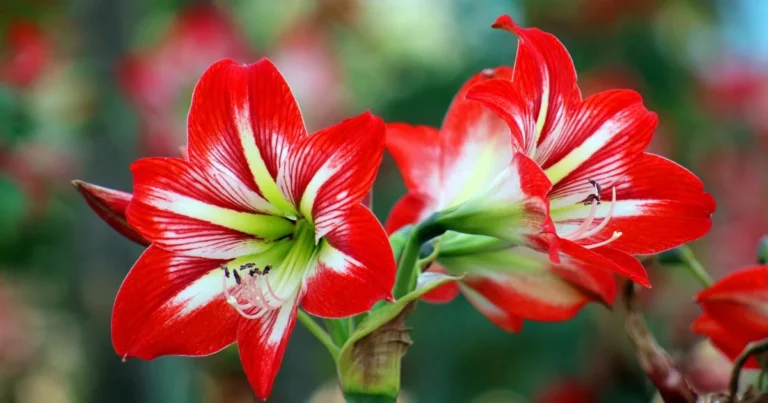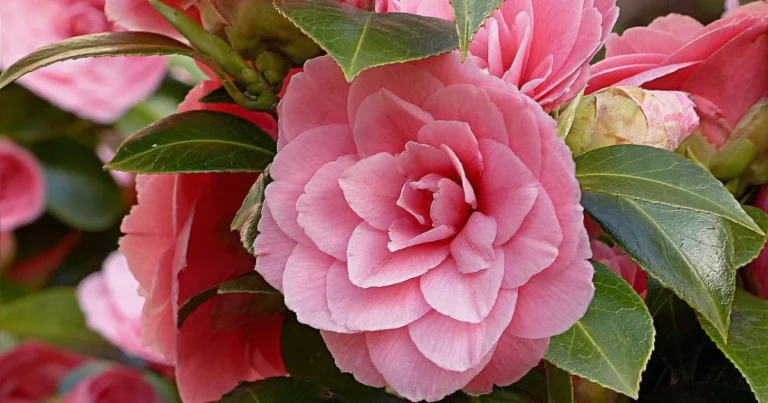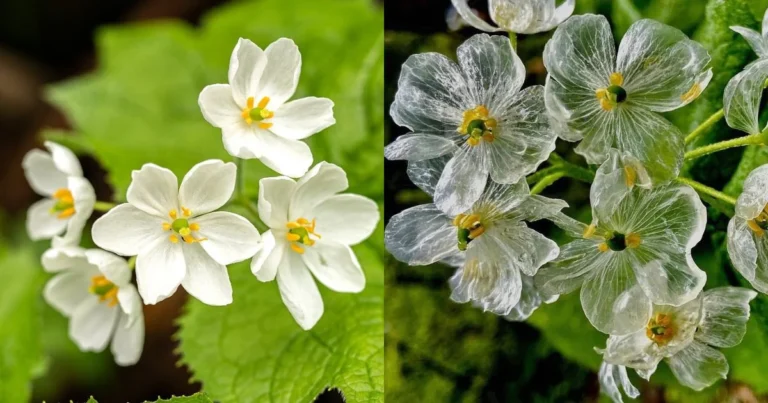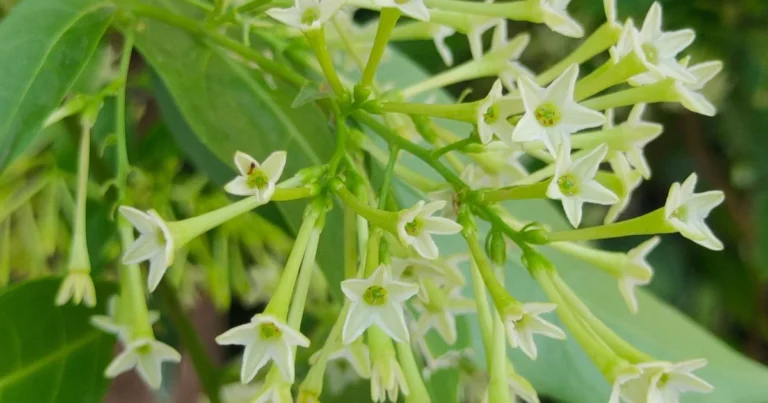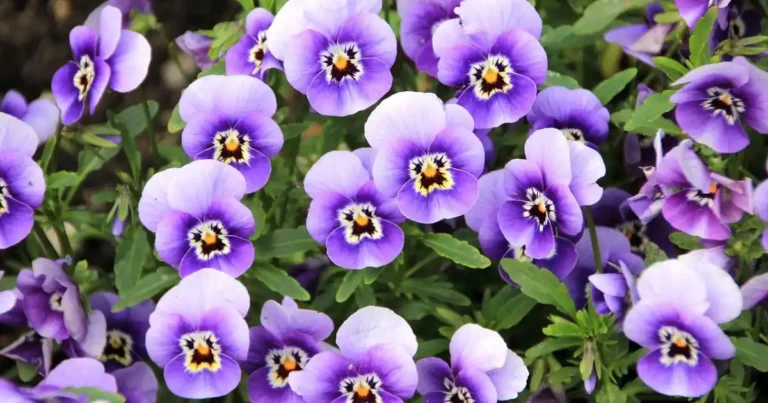Discover the Amazing Flower Skeleton and How It Thrives
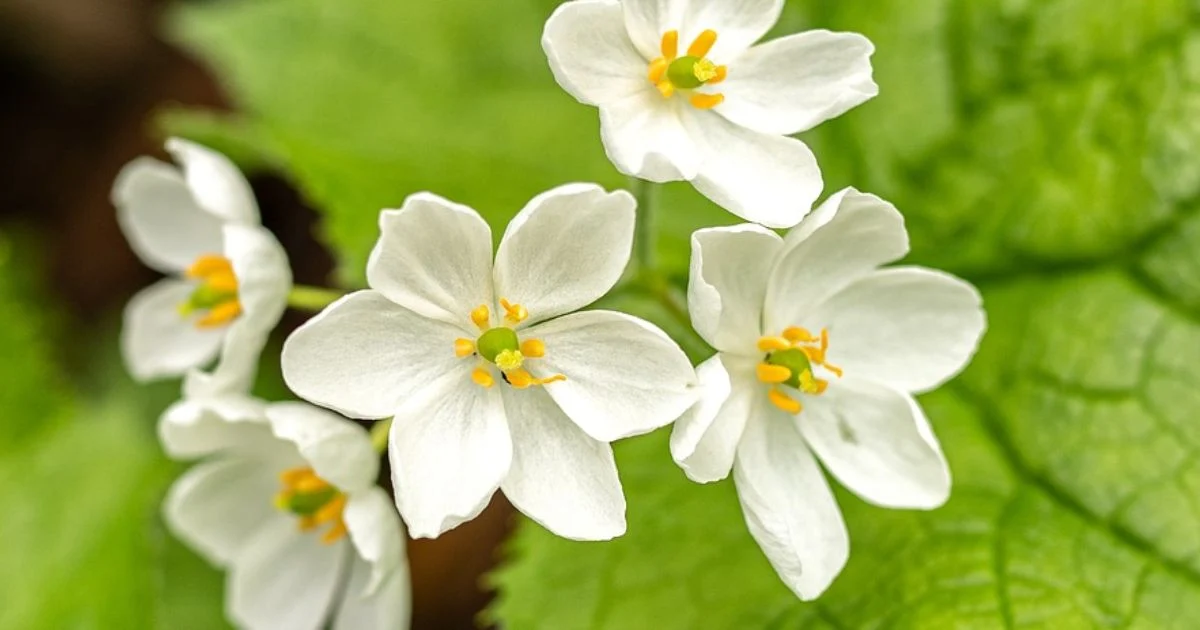
Imagine a plant that defies what you expect from nature a flower that becomes transparent in the rain, as if it’s shedding its layers to reveal its hidden beauty. The flower skeleton, scientifically known as Diphylleia grayi, It’s an amazing natural wonder. With its unique ability to transform and adapt, this plant has captured the hearts of gardeners and nature lovers alike. Whether you’re intrigued by its delicate appearance or its remarkable biology, this article will walk you through everything you need to know about flower skeletons, including how they grow and thrive.
Table of Contents
Skeleton Flower Overview
| Attribute | Details |
| Genus Name | Diphylleia |
| Common Name(s) | Skeleton Flower, Ghost Flower |
| Light Requirements | Partial to full shade |
| Height and Width | 12–18 inches tall, 12–15 inches wide |
| Flower Color | White (turns transparent in rain) |
| Foliage Color | Green with purple veins |
| Growing Zones | 5–8 (USDA Hardiness Zones) |
| Propagation Methods | Seeds, division |
| Uses/Benefits | Ornamental, garden decoration, attracts pollinators |
What is a Flower Skeleton?
The this unique plant isn’t just another ornamental plant. It’s a botanical wonder with petals that turn transparent when exposed to water, creating a mesmerizing effect. Often referred to as the the magical flower, this plant belongs to the Diphylleia genus, It’s a piece of the Berberidaceae family.
The plant’s transformation happens due to the structure of its petals. When dry, they appear white, but when wet, water seeps into the cells, making them transparent. This unique feature has earned the Diphylleia grayi a place in the hearts of gardeners looking for a touch of magic in their gardens.
The Science Behind Its Transparency
The transparency of the petals is caused by their lack of pigments and the way water interacts with their cellular structure. As water fills the spaces in the petal cells, it refracts light differently, making the petals appear glass-like. When they dry out, the opacity returns, restoring their original white hue.
How Does a Flower Skeleton Grow?
Growing a this unique plant isn’t difficult if you understand its specific needs. Here’s a step-by-step guide to help you cultivate this unique plant in your garden:
Ideal Growing Conditions
- Light Requirements: Diphylleia grayi thrive in partial to full shade. They’re perfect for woodland gardens or shaded corners of your yard.
- Soil: They prefer well-draining, humus-rich soil that retains some moisture without becoming waterlogged.
- Temperature: These plants grow best in USDA hardiness zones 5 to 8. They can tolerate mild winters but don’t do well in extreme cold or heat.
Planting and Propagation
- Planting: Plant the skeleton flower in a spot that receives filtered sunlight. Space them 12–15 inches apart to allow room for growth.
- Propagation: You can grow new plants from its seeds or by splitting it apart. If using seeds, plant them in the fall and cover lightly with soil. To divide the plant, gently pull apart the roots at the beginning of spring.
Watering and Maintenance
- Watering: Make sure the soil stays damp, but don’t let it get too wet. Giving a plant too much water can make its roots rot. Not enough water, and the plant will droop and wilt.
- Mulching: Spread mulch around the plant’s base. This helps keep the soil moist, like a blanket holding in water.
- Fertilizing: To help your plants grow strong in the spring, give them a balanced, slow-release fertilizer early in the season.
The Amazing Transformation: Why Do Its Petals Turn Transparent?
The skeleton flower’s transformation is not just a visual marvel but also an adaptive trait. While scientists aren’t entirely certain why the plant evolved this feature, there are some theories:
- Protection: The transparency may help the flower blend into its surroundings when it rains, reducing visibility to predators.
- Pollination Aid: Some experts believe the clear petals could reflect light differently, attracting specific pollinators.
This transformation adds to its allure, making it a favorite among gardeners who appreciate unique plants.
Common Challenges and How to Overcome Them
Even though Diphylleia grayi are relatively low-maintenance, they can face some challenges. Here’s how to tackle them:
Pests and Diseases
- Mildew: To stop that powdery white stuff called mildew, make sure there’s good airflow around your plants and don’t water them from above.
- Slugs and Snails: These pests can gnaw on the leaves, Use organic slug repellents or set up barriers around the plants.
Environmental Stress
- Overwatering: Don’t overwater your plants, or their roots might rot.
- Cold Sensitivity: Cover the plants with a frost cloth during unexpected cold snaps in spring.
Why You Should Grow a Skeleton Flower
If you’re still on the fence about adding this unique plants to your garden, consider these benefits:
- Aesthetic Appeal: Few plants can rival the visual drama of petals that turn transparent in rain.
- Low Maintenance: Skeleton flowers don’t require intensive care, making them ideal for beginner gardeners.
- Pollinator-Friendly: Bees and butterflies love these plants, and that helps the environment around here.
- Perfect for Shade: If you have a shaded garden area, this plant will thrive where others might struggle.
Landscaping with Diphylleia grayi
this magical flower aren’t just for plant enthusiasts, they’re also excellent for landscaping. Here are some ways to put them to work:
Garden Design Ideas
- Plant them under trees or in shaded garden beds for a woodland feel.
- Pair them with ferns or hostas to create a lush, layered look.
Decorative Containers
- Grow them in pots or decorative containers to bring a unique touch to patios or balconies.
- Use containers with adequate drainage to prevent overwatering.
Conclusion
The Diphylleia grayi is more than just a plant; it’s a conversation starter, a piece of living art, and a testament to the wonders of nature. By understanding its needs and providing the right conditions, you can enjoy this magical plant in your own garden. Whether you’re drawn to its unique transparency or its low-maintenance care, this unique plant is a rewarding addition to any garden. Start growing one today, and let nature’s magic unfold before your eyes.
FAQ – Frequently Asked Questions
What is a flower skeleton and how does it grow?
A flower skeleton, or Diphylleia grayi, is a plant known for its translucent petals that turn clear when wet. It grows in shaded areas with moist, well-drained soil.
How do you take care of a flower skeleton plant?
Provide partial to full shade, consistently moist soil, and good drainage. Don’t give your plants too much water. Put mulch around them to help the soil stay damp.
Why do the petals of the skeleton flower become transparent?
The petals lack pigments, and water fills their cells, refracting light differently to make them appear transparent.
Can I grow a flower skeleton indoors?
Yes, you can grow it indoors in a pot if you provide adequate shade and keep the soil moist.
What makes the skeleton flower unique?
Its ability to turn transparent when wet and its suitability for shaded gardens make it a standout among ornamental plants.
Where can I buy skeleton flower seeds or plants?
You can find skeleton flower seeds or young plants at specialty garden centers, online plant stores, or nurseries specializing in rare plants.
Now that you know all about this unique plant, why not bring a little magic into your garden? Share your gardening experience with others and inspire them to grow their own piece of nature’s wonder.

